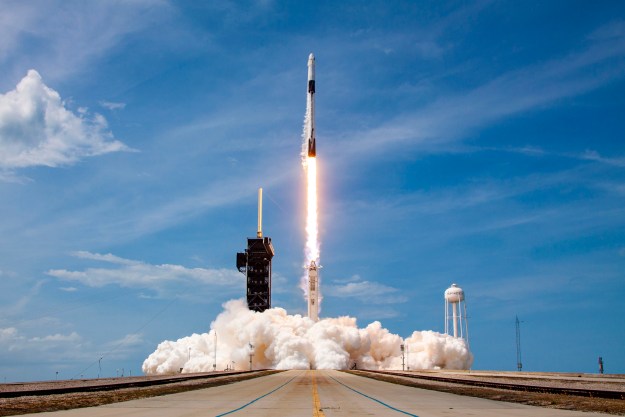As the authorities in Florida begin to assess the wider damage wrought by Hurricane Nicole on Thursday, a team at the Kennedy Space Center is currently performing detailed inspections of NASA’s next-generation Space Launch System (SLS) moon rocket.
The 98-meter-tall SLS rocket, with the Orion spacecraft at its tip, remained on the launchpad as the extreme weather passed through, exposing the vehicle to gusts of up to 82 mph. The rocket arrived on the launchpad last weekend ahead of its maiden flight, which could take place on Wednesday.
Tim Free, NASA’s associate administrator for exploration systems development, posted a statement at around 5 p.m. ET detailing the situation at the Kennedy Space Center.
“Teams monitored SLS and Orion remotely during the storm … Our team is conducting initial visual checkouts of the rocket, spacecraft, and ground system equipment with the cameras at the launchpad.”
Free said the feeds show “very minor damage” such as tears in weather coverings, adding that personnel will soon carry out additional on-site walkthrough inspections of the vehicle.
When Hurricane Ian approached the Space Coast at the end of September, NASA decided to move the SLS rocket from the launchpad to the shelter of the Vehicle Assembly Building four miles away. This time it deemed it safer to leave the rocket on the launchpad. Free explained why:
“We took the decision to keep Orion and SLS at the launchpad very seriously, reviewing the data in front of us and making the best decision possible with high uncertainty in predicting the weather four days out,” the official said. “With the unexpected change to the forecast, returning to the Vehicle Assembly Building was deemed to be too risky in high winds, and the team decided the launchpad was the safest place for the rocket to weather the storm.”
If the detailed inspections show the rocket and launch equipment to be intact, NASA is likely to stick with its target launch date of November 16. The uncrewed Artemis I mission will send Orion on a flyby of the moon to test the hardware ahead of the crewed Artemis II mission that will take the same route. If both of these missions go according to plan, NASA plans to put the first woman and first person of color on the lunar surface in the Artemis III mission, which could take place as early as 2025.
Editors' Recommendations
- These 3 companies are developing NASA’s new moon vehicle
- Meet NASA’s trio of mini moon rovers set to launch next year
- Five rocket launches to look out for in 2024
- NASA astronauts sign their moon rocket
- NASA’s Artemis moon astronauts suit up for mission practice run


